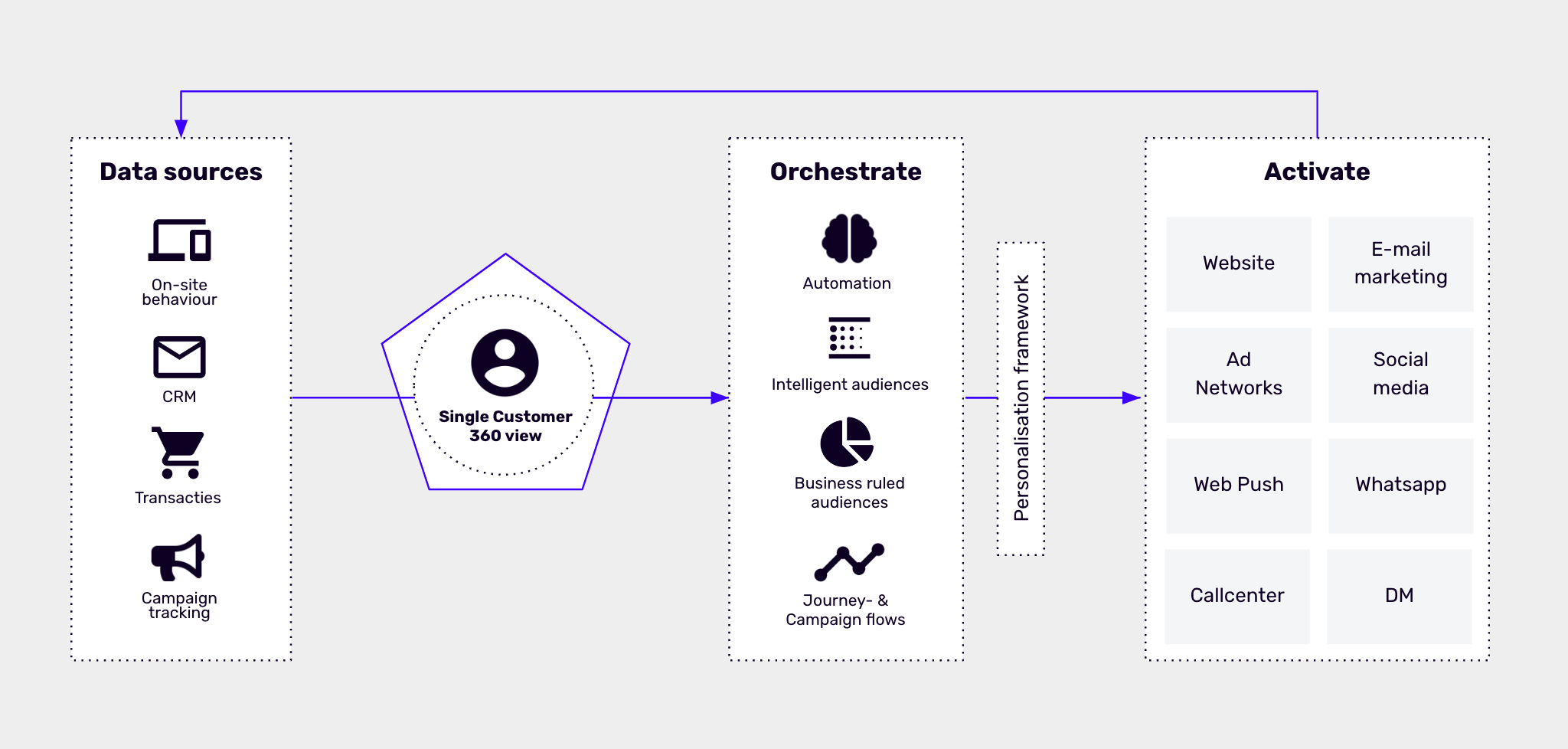The world of e-commerce and digital strategies evolves rapidly. This blog may contain insights that have since been surpassed by new developments. Curious about the latest trends and fresh perspectives? Dive into our most current articles on Insights.
Do you want to use your marketing campaigns more efficiently and personalize them on a large scale? Meet the Yellowgrape Lifecycle Model! This proven and effective model helps companies to identify their customer base and optimize their marketing efforts. Sounds like quite a challenge, but in fact, it's just 5 small steps. Read on to find out how you can take your marketing to the next level with the Yellowgrape Lifecycle Model.
Personalizing your marketing on a large scale is only possible if your customer data is in order. Make sure you Google Tag Manager is well organized, you measure the right events and you have an adult CRM system. In order to then be able to personalize, this data must be forwarded to a CDP (Customer Data Platform). Within this, you maintain a 360-degree customer profile and you can activate your various marketing channels (ads, email, social, etc.).

Once you have set up your data systems, you can start capturing first-party data and recognizing customer behavior within your CDP. At the profile level, you keep track of all page views, add-to-carts, purchases, or even motivation scores. This allows you to build relevant audiences and show fully personalized content on the website.

The basis of the Lifecycle Model is the customer strategy. This divides your website visitors from Unknown Visitor (first website visit) up to 'fan' (the ultimate returning customer). Exactly what being a fan means varies by webshop and can even be interpretable by employee. With a fashion website, you could describe a fan as someone who buys a new wardrobe every season and buys for at least 500 euros a year. With a telecom provider, a fan could be just someone who chooses you again after a move and then gives you an NPS score of 9. In short; get together as a team and discuss together what the ultimate customer is.
Based on the captured data and the defined fan customer, you can start segmenting your customer base. Within the Lifecycle, we distinguish between the following customer groups: “Unknown Visitor”, “Known Visitor”, “First Time Customer”, “Returning Customer” and “Fan”. In the aforementioned example of a fashion website, you could fill this in as follows:
Once you have the historical customer data in order, you can import it into your CDP and have audiences filled. This way, you can see which and how many profiles fall into this box per lifecycle segment, and this forms the basis for step 5.

Now it's really going to be fun! This is because based on the previous step, you can see exactly where your website visitors are in the lifecycle and which step you should focus on. First, plot your current campaigns along this lifecycle and you'll see that there may already be some campaigns running that you can assign to one baby step. Think of a newsletter subscription (from Unknown Visitor unto Known Visitor) or 10% off a first order (from Known Visitor unto First Time Customer). But the most profit can be achieved when you get started with the insights of the completed lifecycle and develop new use cases. Always use the desired behavior as a basis, so that you will develop personalized campaigns for each segment.

Use the cutting edge AI tool and give your Customer Lifecycle strategy a significant boost. Generate neuro-driven content for all possible scenarios and channels within your Lifecycle Strategy and make this content extra persuasive with the addition of the Cialdini principles. Check out the free tool directly via ai.yellowgrape.nl and be amazed!
With the Yellowgrape Lifecycle Model, you can take your marketing to the next level through persuasive personalization. Follow these 5 simple steps and ensure a more effective and efficient use of your marketing campaigns. Don't forget to monitor your results and continuously optimize your strategy. This way, you will continue to surprise your customers and bind them to your company in the long term.




